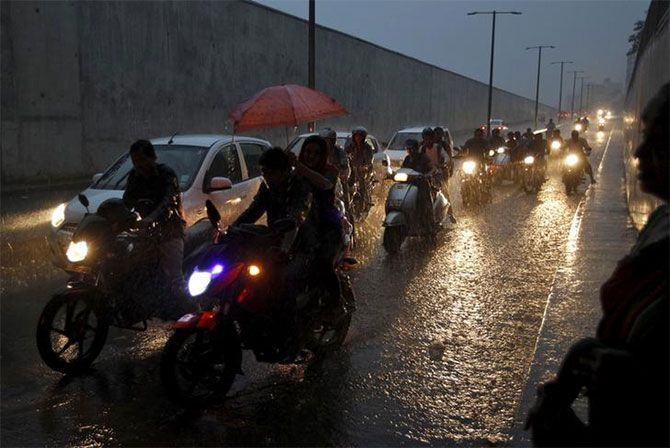The southwest monsoon which reached the country on May 30 well within its normal onset date

The much-awaited south-west monsoon is likely to hit the national capital of Delhi in the next 3-4 days and cover the entire Northern parts of the country thereafter.
The monsoon might move quickly towards the north-western parts of the country because of an interaction between a cyclonic circulation emerging from Odisha with an approaching western disturbance, the India Meteorological Department (IMD) said in its latest weather report.
It said conditions are favourable for a 'rapid' advance of southwest monsoon into most parts of northwest India, including remaining parts of Gujarat, Madhya Pradesh, Bihar, East Uttar Pradesh, entire West Uttar Pradesh, Haryana, Chandigarh and Delhi, Punjab, Uttarakhand, Himachal Pradesh and Jammu and Kashmir and some parts of Rajasthan during next 3-? 4 days.
The south-west monsoon which reached the country on May 30 well within its normal onset date.
Thereafter, its progress over the Southern, Northeastern and western parts of the country has been rather satisfactory.
In the past few days, the monsoon covered several areas of central India which is vital for the growth of kharif crops as large tracts are rainfed.
Till June 21, India had received around 100.6 millimetres of rainfall which was 4 per cent more than normal.
The IMD in its second updated forecast for the 2017 south-west monsoon released earlier this month had upped its forecast to 98 per cent of the long period average (LPA), from the 96 per cent forecast in April due to the weakening of El Nino.
Seasonal rainfall is likely to be the lowest in north-west India at 96 per cent of the LPA. However, this may not have much effect, as 80 per cent of the area is irrigated, the Met predicted.
Central India is expected to receive 100 per cent of the LPA rainfall while the southern peninsula will receive 99 per cent. Northeast India is expected to receive 96 per cent of the LPA rainfall.
The IMD's forecasts are based on a model error of plus or minus 8 per cent. The prospect of a normal monsoon for the second year in a row is expected to fuel rural demand and ease food inflation.
Photograph: Amit Dave/Reuters












 © 2025
© 2025